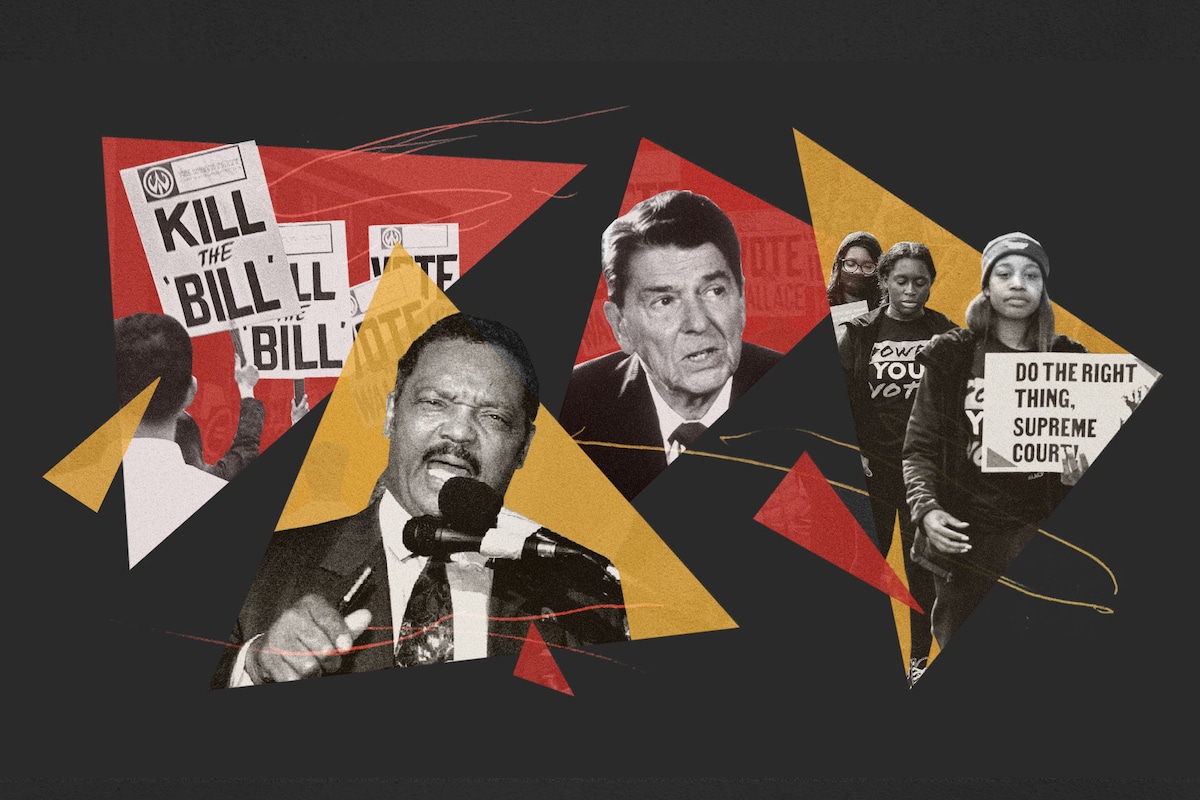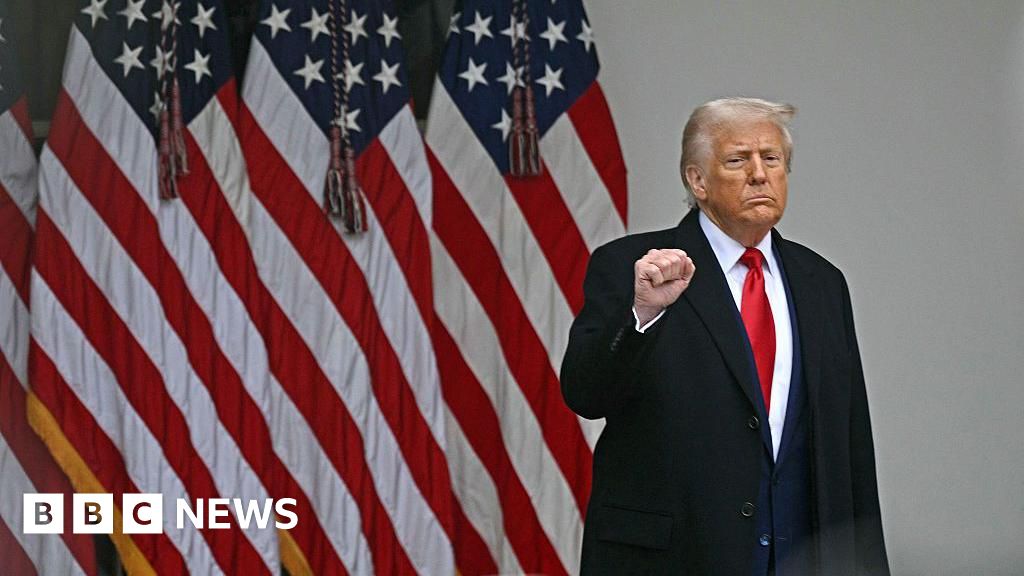
History of DEI: A timeline of affirmative action’s rise and fall
- Science
- March 9, 2024
- No Comment
- 59
Since the Supreme Court ruled race-based college admissions unconstitutional last June, affirmative action in all forms has come under attack.
Conservative activists have filed dozens of complaints against Fortune 500 companies alleging discrimination against White people. Long-standing federal programs created to benefit minority-owned businesses find themselves on shaky ground; on Tuesday, a Texas federal judge ordered that a 55-year-old agency must serve all races. And the resignation of Harvard’s first Black president amid allegations of plagiarism and antisemitism on campus has been claimed as a victory by critics intent on dismantling diversity, equity and inclusion (DEI) programs in academia and the private sector.
Such policies divided Americans long before President John F. Kennedy popularized the term in 1961, when he urged defense contractors to “take affirmative action” to hire workers “without regard to their race, creed, color, or national origin.” Even as these policies have fueled upward mobility for women and minority groups, they have faced intense backlash. Here’s a look at the history of affirmative action and the moments that have advanced and repelled it.
Story continues below advertisement
Story continues below advertisement
Chapter 1
1865 — 1877
First steps toward equal rights
The earliest forms of affirmative action date to Reconstruction, the turbulent period after the Civil War. Slavery is outlawed in 1865, emancipating 4 million Black men, women and children. But freedom comes with no rights or protections. Efforts to remedy this legal limbo ignite fierce pushback, including claims of discrimination against White people. In the late 1870s, Southern states start enacting Jim Crow laws that enforce segregation in public transportation, schools, parks, cemeteries, theaters and restaurants.
Congress establishes the Freedmen’s Bureau
The bureau provides food, shelter, medical services and land to displaced Blacks from the South, whose prior status as enslaved people leaves them without economic means or legal protection — and vulnerable to assault by Southern Whites. It also establishes schools, supervises contracts, and manages confiscated and abandoned lands.
Congress passes first civil rights law
Johnson vetoes it
The Freedmen’s Bureau closes
Facing resistance from Southerners and focused on other national matters, Congress defunds the bureau.

Chapter 2
1961 — 1964
Affirmative action is born
Nearly a century later, African Americans remain largely locked out of the skilled workforce. A 1960 report by the Department of Labor finds that Black workers make 60 percent less on average than Whites. Meanwhile, the modern civil rights movement begins challenging segregation in the South, and the landmark Brown v. Board of Education case leads to the desegregation of public schools.
Kennedy issues first affirmative action directive
Responding to growing demands for racial equality, Kennedy signs an executive order requiring federal contractors to “take affirmative action to ensure that applicants are employed, and that employees are treated during employment, without regard to their race, creed, color, or national origin.”

The order is unevenly enforced
Many contractors, especially in states bordering the South, ignore the order, keeping their workforces segregated and hiring mostly Whites.
Johnson signs the Civil Rights Act of 1964
Congress approves the sweeping legislation, which includes sections aimed at ending discrimination in the private sector (Title VII) and in federally funded programs (Title VI), with bipartisan support. President Lyndon B. Johnson later signs an executive order strengthening Kennedy’s affirmative action order for government contractors.
Confusion over implementation
Many businesses are confused about how to comply with the new laws, which encourage them to diversify their workforces while prohibiting discrimination. Critics say they would result in preferential treatment of Black Americans, claims that persist for decades.
Chapter 3
1969 — 1979
Affirmative action booms
Widespread adoption of affirmative action and equal opportunity measures leads to real-world advances. In 1969, the average income of “non-White” young, college-educated men is 98 percent of the average of U.S. workers, up from just 80 percent a decade earlier, according to one 1973 study, which attributes the improvement to a “virtual collapse in traditional discriminatory patterns in the labor market.” The wage gains coincide with an explosion in the number of Black people enrolling in colleges — 417,000 in 1970, up 83 percent from a decade earlier.
Nixon implements the Philadelphia Plan
With Philadelphia slated to receive millions for schools, dorms, libraries and a new U.S. mint, the Nixon administration chooses the city for a new program to boost African American employment in the construction industry. The plan forces construction unions to integrate, and the initiative is expanded to New York, Los Angeles, Chicago and other cities.
The plan faces resistance
Philadelphia contractors sue, alleging the plan creates hiring “quotas” that violate the Civil Rights Act of 1964, but they lose in court. Clarence Mitchell, chief lobbyist for the NAACP, denounces the plan as a calculated attempt by Nixon, a Republican, to drive a wedge between two traditionally Democratic factions: Blacks and unions.

Colleges adopt affirmative action

Voluntary affirmative action plans survive
While the Bakke case challenges racial preferences in universities, a case brought by a steel plant worker challenges their use in the private sector. In 1974, Brian Weber sues the United Steelworkers of America, which had agreed with Kaiser Aluminum and Chemical Corp. to reserve a certain number of skilled training positions for Black workers. Weber, who is denied a position, alleges that Kaiser’s affirmative action plan violates the 1964 Civil Rights Act. The Supreme Court rules 5-2 that the plan — and therefore other voluntary plans — do not violate the act but rather fulfill its intent.
Story continues below advertisement
Story continues below advertisement
Chapter 4
1981 — 1989
Reagan’s ‘colorblind’ America
Thomas takes over the EEOC
Clarence Thomas, the future Supreme Court justice and a harsh critic of affirmative action, is named to chair the Equal Employment Opportunity Commission, which enforces workplace anti-discrimination laws. Under Thomas, cases pile up, which stymies enforcement.

Reagan fails to change federal contracting rules

Chapter 5
1990 — 1999
The battle becomes entrenched
In the 1990s, lawsuits challenge affirmative action practices in government, business and education. Some states argue affirmative action is discriminatory, and a few pursue bans in various forms. The nation’s highest courts debate whether diversity is a “public good.” Meanwhile, changing U.S. demographics prompt private companies to start considering how identity affects people’s lives at work and to explore training programs to help workers recognize “unconscious bias.”
Employment protections for disabled Americans
Key provisions of the Americans With Disabilities Act of 1990 take effect, barring discrimination against people with disabilities for the first time in the private sector.

Standards for considering race
In Adarand Constructors Inc. v. Peña, the Supreme Court sets new standards for when federal, state and local governments may take race into account, ruling that programs designed to benefit racial minorities “must serve a compelling government interest, and must be narrowly tailored to further that interest.”
University policies take a hit
Siding with White law-school applicants in Hopwood v. Texas, the U.S. Court of Appeals for the 5th Circuit bars the University of Texas School of Law from using race as a factor in admissions. It’s the first successful legal challenge to a university affirmative action policy since Bakke.
California bans affirmative action
California voters approve Proposition 209, outlawing discrimination or preferences for “any individual or group on the basis of race, sex, color, ethnicity, or national origin” in public employment, education and contracting.

Texaco settles race-discrimination claim
Federal ban fails
In a bipartisan vote, the House Judiciary Committee votes 17-9 to reject the Civil Rights Act of 1997, which would have banned affirmative action in federal government. Rep. George Gekas (R-Pa.), who moves to table the bill, says “forcing the issue at this time could jeopardize the daily progress being in made in ensuring equality.”
Washington state bans affirmative action
Washington voters pass Initiative 200, which bans affirmative action in hiring, public contracting and higher education.
Florida ends race-conscious admissions
Florida Gov. Jeb Bush (R) signs executive order “One Florida,” which bans race-conscious admissions at the state’s public universities.
Chapter 6
2000 — 2010
Divisions over diversity
State bans spur pushback across the country and keep affirmative action on the ballot. The Supreme Court repeatedly is asked to weigh in on race-conscious admissions in higher education. But as the legal tug-of-war rages, affirmative action continues to gain momentum in corporate America, where research begins to show that a diverse workforce is beneficial to the bottom line.
Coca-Cola settles $192 million discrimination suit
Coca-Cola Co. agrees to pay $192 million to Black workers who claim the company had systematically denied them opportunities and had created a racially hostile environment. Coca-Cola admits no wrongdoing but agrees to make significant changes to its performance evaluation and promotion practices.
The University of Michigan cases
The Supreme Court weighs in on two cases involving affirmative action admissions policies: Grutter v. Bollinger and Gratz v. Bollinger. In Gratz, the court rules against an undergraduate admissions policy that relies on a formulaic point system for people in various racial groups, determining it was “not narrowly tailored.” In Grutter, the court upholds the law school’s admissions policy, citing the “compelling interest” of “educational benefits that flow from a diverse student body.”

Michigan bans affirmative action
Voters approve the “Michigan Civil Rights Initiative,” banning preferential treatment of minorities in public employment, public education, public contracting or public college admissions — which includes the University of Michigan.
No affirmative action for K-12
The Supreme Court rules against considering race when assigning students to public grade schools in two cases: Parents Involved in Community Schools v. Seattle School District No. 1 and Meredith v. Jefferson County Board of Education.
Arizona bans affirmative action
Arizona enacts Proposition 107, which claims it “reaffirms the colorblind principles of the Civil Rights Act of 1964,”by banning preferential treatment of minorities in public employment, public education and public contracting. The move follows a similar ban in Nebraska in 2008.
Chapter 7
2011 — present
DEI and beyond
New Hampshire bans affirmative action
New Hampshire’s ban on affirmative action in the public sector and college admissions takes effect.
Landmark decision in Texas
The Supreme Court reaffirms the legality of race-conscious college admissions in Fisher v. University of Texas, ruling that the use of race as a factor at the University of Texas at Austin is well founded and narrowly tailored.
The DEI boom
Floyd’s murder and subsequent protests spark a rush of boardroom commitments: Companies around the world spend an estimated $7.5 billion on DEI programs and hire chief DEI officers.

(Tim Gruber for The Washington Post)
Washington state reverses ban
Washington Gov. Jay Inslee rescinds the state’s affirmative action ban, in place since 1998, and announces an executive order meant to boost diversity in government contracting.
Supreme Court bars race-based admissions
Upending decades of legal precedent, the Supreme Court rules that race-conscious college admissions programs at Harvard and the University of North Carolina are unconstitutional, causing colleges and universities to shift to race-neutral policies.

What’s next?
After affirmative action is banned from college admissions, DEI becomes a lightning rod. Dozens of bills targeting DEI policies in higher education are pending across the country. Companies are facing challenges to diversity policies from shareholders and conservative activists. Some top law firms have opened race-focused fellowships to applicants of all races. The battle is likely to heat up in 2024 as companies adapt to a shifting legal landscape and DEI becomes a talking point on the presidential campaign trail.
Methodology
This timeline is based interviews with historians, sociologists and DEI experts, as well as the books “The Pursuit of Fairness: A History of Affirmative Action” (2005) by Terry H. Anderson; “The Affirmative Action Puzzle” (2020) by Melvin I. Urofsky; and “Inventing Equal Opportunity” by Frank Dobbin (2009).
About this story
Editing by Lisa Bonos, Robbie Olivas DiMesio, Lori Montgomery and Karly Domb Sadof. Design editing by Betty Chavarria. Photo editing by Haley Hamblin.
Illustrations by Emma Kumer/The Washington Post with images from (in order of appearance) FPG/Archive Photos/Getty Images; Reuters; Hulton Archive/Getty Images; Eric Lee for The Washington Post; the Library of Congress; Jack Delano/PhotoQuest/Getty Images; Jackson State University/Getty Images; Walt Zeboski/AP; Frank Wiese/AP; Marcio Jose Sanchez/AP.
#History #DEI #timeline #affirmative #actions #rise #fall









